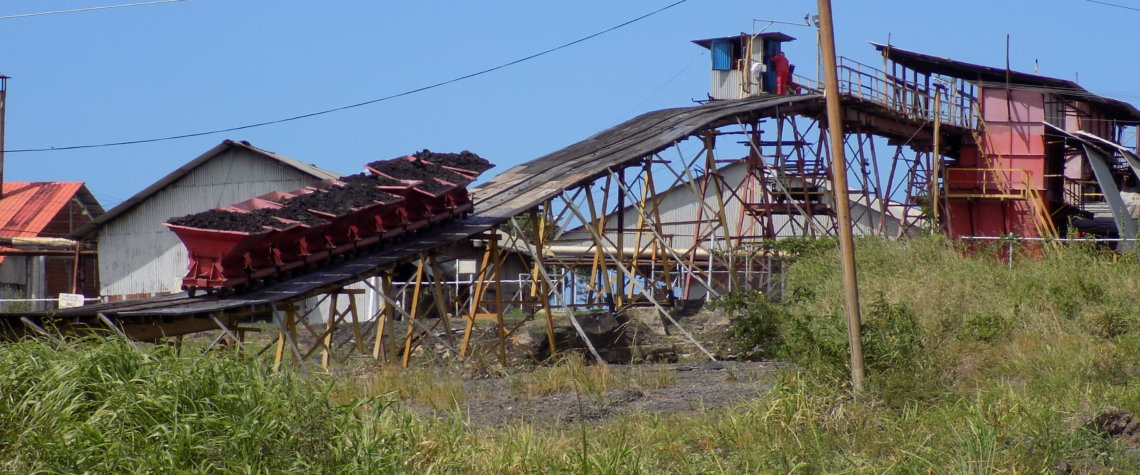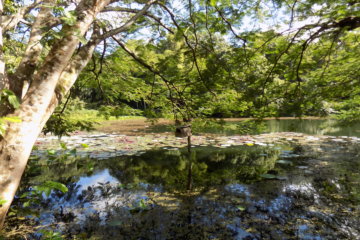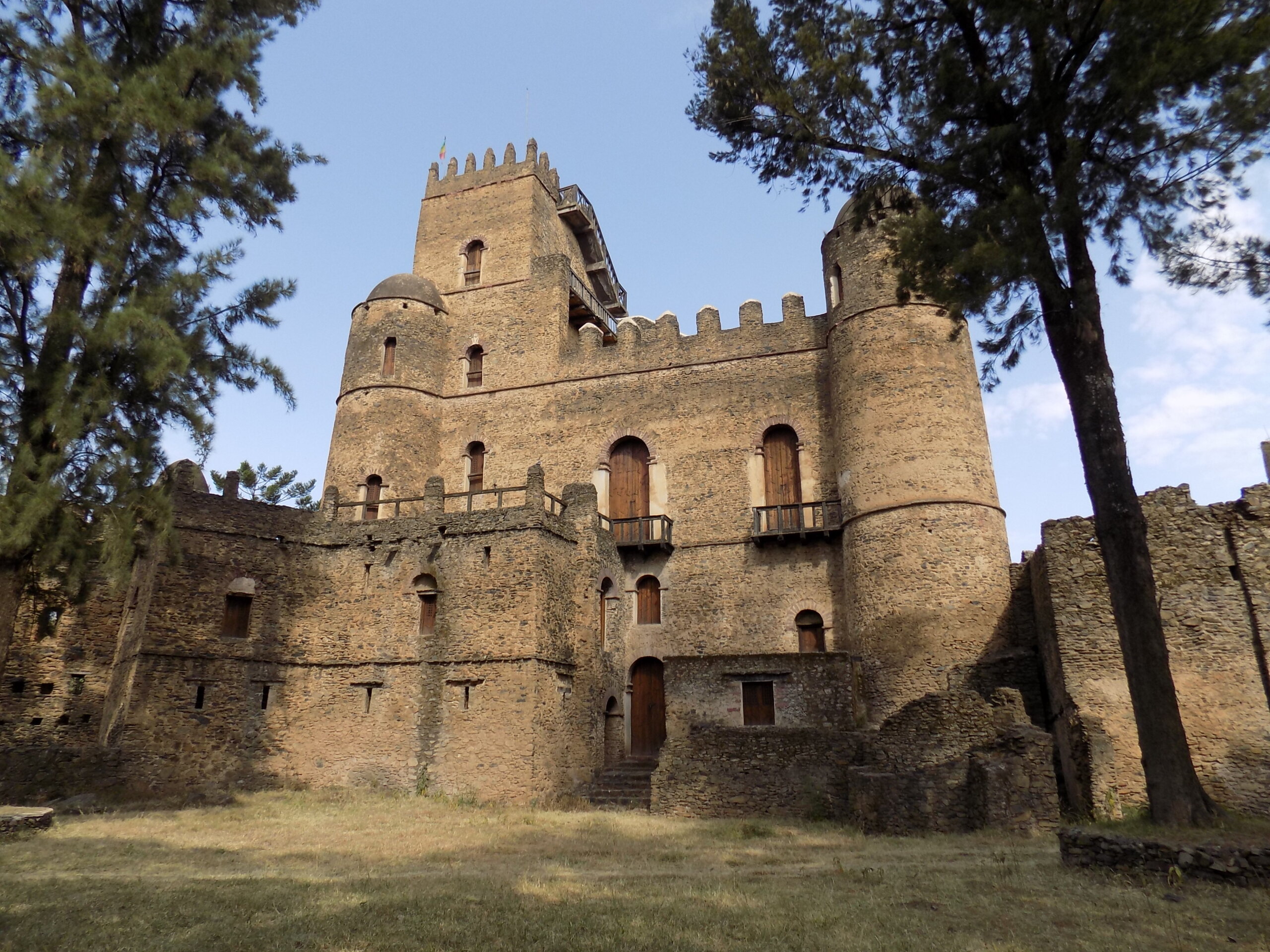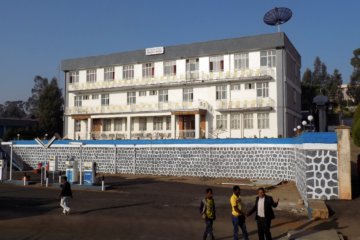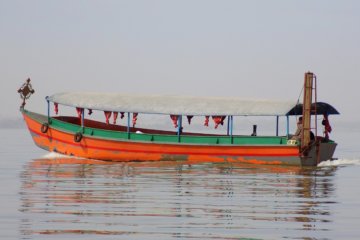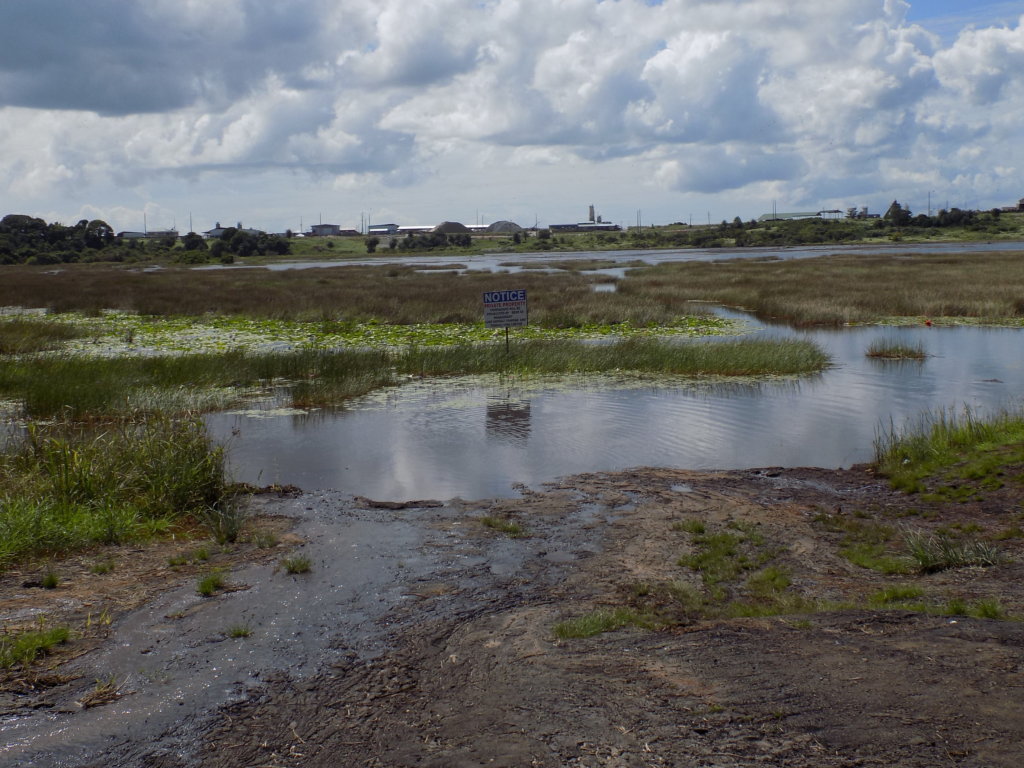
In this article
Trinidadians (or Trinis as they refer to themselves here) often cite Pitch Lake as being the eighth wonder of the world. It doesn’t look particularly impressive (indeed, some commentators have likened it to a flooded car park!), but this 40,000 square metre site is the largest deposit of pitch in the world and is well worth a visit.
Guided Tour of Pitch Lake
You could explore the lake on your own, but I wouldn’t recommend it! Some parts of Pitch Lake are unsafe to walk on, so being led by one of the knowledgeable guides is pretty much essential. Our guide, Neil, was both entertaining and informative. Stupidly, we didn’t carry any water with us. We set off at 12 noon and by the end of the tour an hour later, I was incredibly hot and yet shivery at the same time. The heat on the walk was intensified by the sun being absorbed into the black surface. I had to sit in the car with the air-con on and drink copious amounts of water until I felt better! Note to self (and to others) – always carry water!!
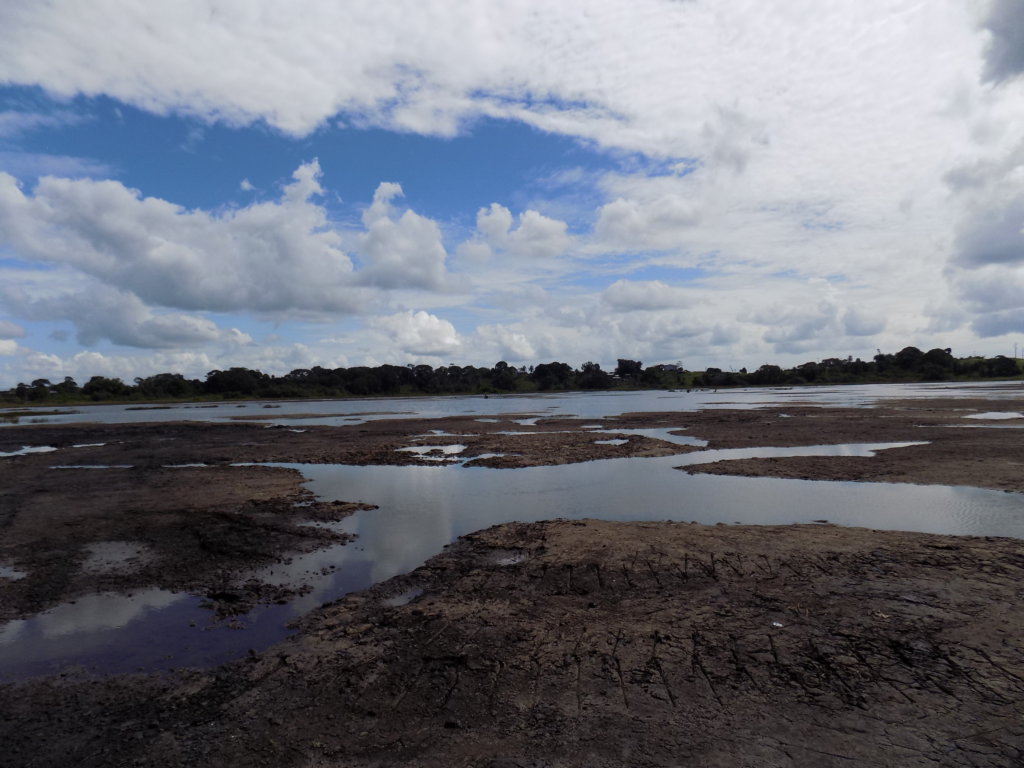
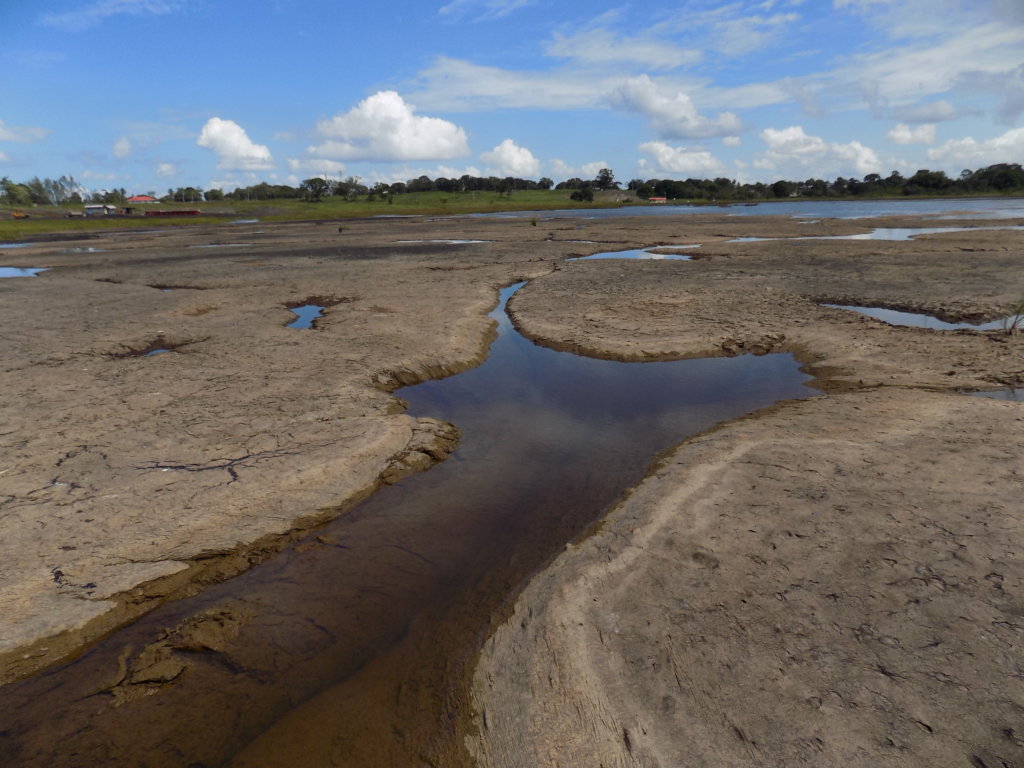
History of Pitch Lake
Pitch Lake in Trinidad was formed five to six million years ago when asphaltic oil flowed into a huge mud volcano here and slowly developed into pitch. Amerindians believed that the lake was created to punish a Carib tribe that killed and ate the sacred hummingbird. Legend has it that the whole tribe was swallowed by Pitch Lake. Sir Walter Raleigh was the first European to ‘discover’ the lake. He came across it in 1595 and used the pitch to seal the hulls of his ships. In 1815, colonial governor, Sir Ralph Woodford, paved over Port of Spain’s dirt roads with pitch from the lake, making Trinidad’s capital the first city in the world to have asphalt streets. Control of pitch excavation remained in British hands until 1978 when the government of Trinidad and Tobago took over.
Pitch Lake Today
The lake is a bizarre place to visit. The surface feels very strange when you walk on it. In places, the gooey, tar-like ‘mother of the lake’ is not firm enough to take the weight of a person and would be impossible to remove if you got it on yourself or your clothes. This is why you need a guide!
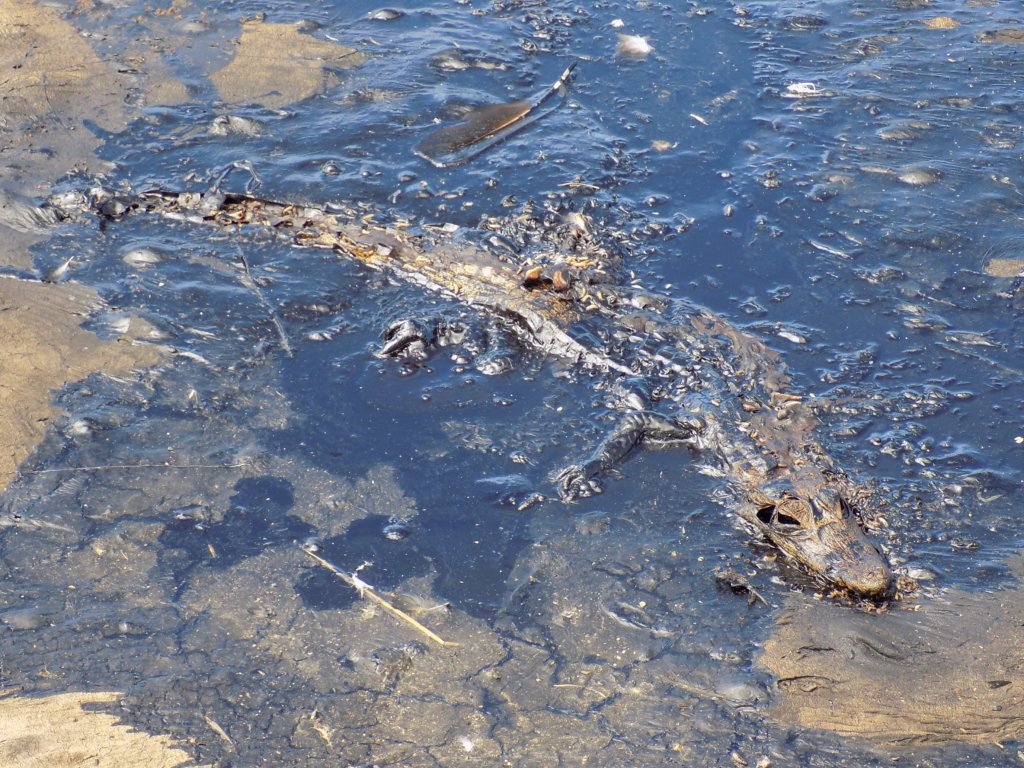
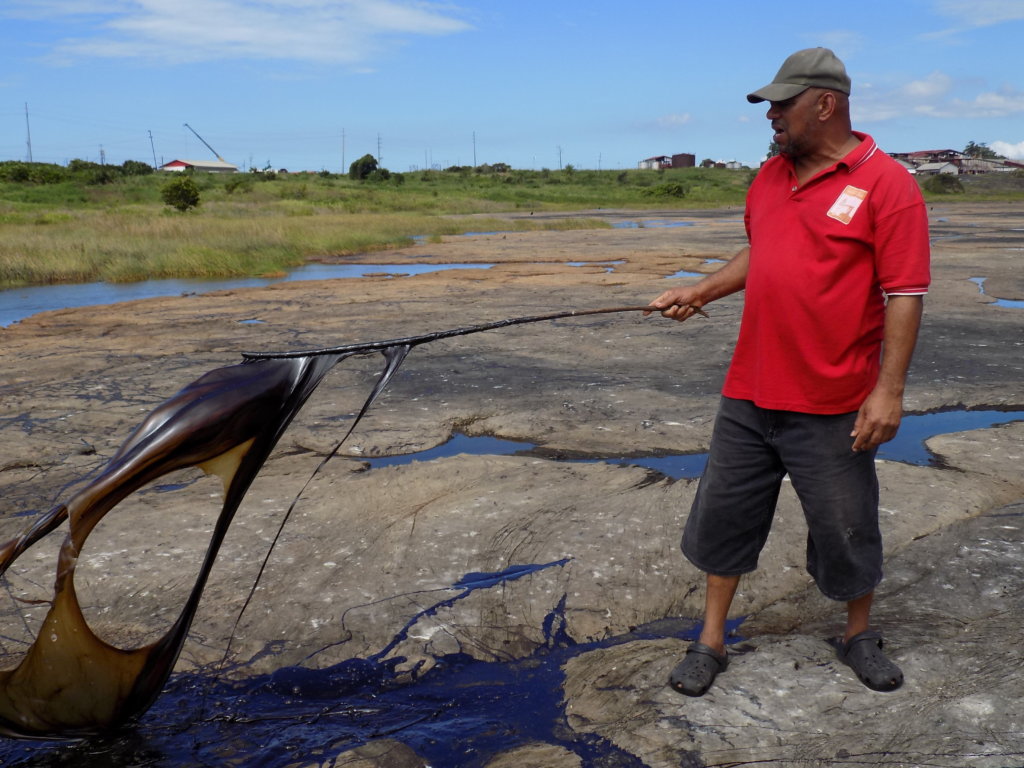

Neil told us where to put our feet and led us safely across the breadth of the lake. He explained to us how locals come to bathe in the pools at the lake’s edges. They believe that the sulphur-rich waters are good for the skin. I can’t imagine doing it myself! Neil also told us about the birds and insects which make the lake their home, especially the flocks of Black Turkey Vultures we could see all around us. He used a stick to stir a molten pool of pitch and drew it up to show us that it was the colour and consistency of black treacle. He also pointed out a dead caiman which had ventured too far into the lake a couple of nights previously and had become trapped in a pool of pitch. There are stories of people suffering the same fate in days gone by!
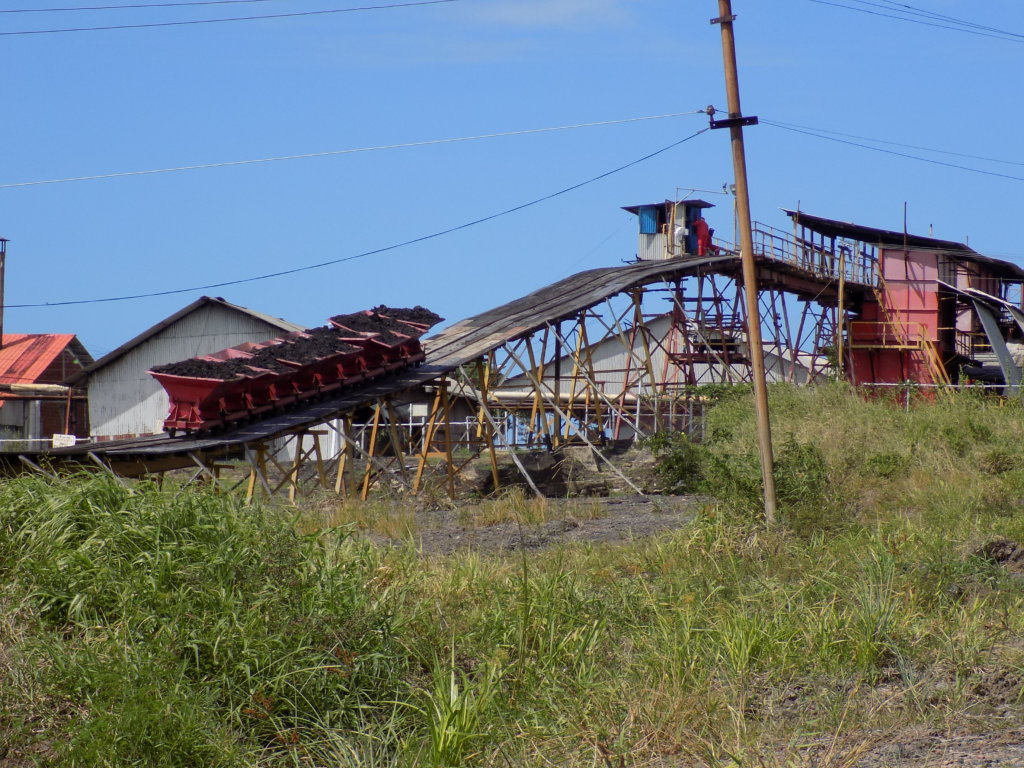
When you visit Pitch Lake, you also get to see the processing facility where the raw material is transformed for export. The lake holds approximately ten million tonnes of asphalt. 180 tonnes are extracted every day. The asphalt is boiled to remove excess water, refined and poured into barrels to be exported all over the world. Neil was proud to tell us that bitumen from here was used at the White House, Buckingham Palace and Canada’s presidential residence.
It is estimated that the depth of the lake is 75 metres and the level of pitch rises naturally after each excavation. Calculations suggest that there’s enough asphalt to last for four or five hundred years. Nonetheless, the surface is several metres lower than it was when commercial operations began in 1867. That, coupled with the ever-increasing demand for roads worldwide, could mean that supplies run out quicker than experts have predicted.
Perhaps it’s best to visit this surreal landscape sooner rather than later?!
READ MORE ABOUT TRINIDAD AND TOBAGO
IF YOU LIKE WHAT YOU’VE READ, PIN IT!!

If you’re travelling soon, please use these links!
Are you travelling soon? Use these links when making your bookings. These are the companies we use. It won’t cost you any extra, but we will earn a few pennies to help keep Happy Days Travel Blog going. Thank you!!
- Book your travel insurance with World Nomads (Never leave home without protecting yourself, your trip and your belongings!)
- Book your flight with Skyscanner
- Book your accommodation with Booking.com
- Book a tour with Tour Radar or Intrepid Travel
- Book city tours and activities with Get Your Guide
Disclosure: This post contains affiliate links. If you click through for more information, or to make a purchase, it may result in a small commission coming my way. Please note that there is no extra cost to you associated with this. Thank you so much for supporting my site.
Join our mailing list

Sign up to receive our monthly newsletter. Keep up with what we're doing and be the first to receive special offers and insider tips.

